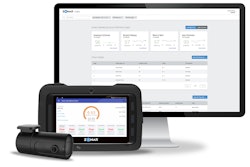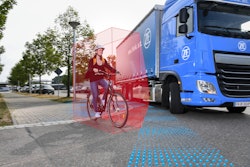
The purpose of the collaboration is to implement Vera in a real application, enabling a connected system for a continuous flow of goods, from a DFDS’ logistics centre to an APM terminal in the port, for distribution across the world.
“Autonomous transports with low noise levels and zero exhaust emissions have an important role to play in the future of logistics, and will benefit both business and society. We see this collaboration as an important start and want to drive progress in this area,” says Mikael Karlsson, Vice President Autonomous Solutions at Volvo Trucks.
Volvo Trucks presented its first electric, connected and autonomous solution, designed for low-speed repetitive assignments in logistics hubs, factories and ports last year. Vera is suited for short distances, transporting large volumes of goods with high precision.
The autonomous system is monitored by an operator in a control tower who is also responsible for the transport. The purpose is to enable a seamless and constant flow responsive to demands on greater efficiency, flexibility and sustainability. The collaboration with DFDS is a first step towards implementing Vera in a real transport assignment on pre-defined public roads in an industrial area.
“This collaboration will help us develop an efficient, flexible and sustainable long-term solution for receiving autonomous vehicles arriving at our gates, benefitting our customers, the environment and our business,” says Torben Carlsen, CEO of DFDS.
The autonomous system will be further developed in terms of technology, operations management and infrastructure adaptations, before it can be fully operational. Moreover, necessary safety precautions will be taken to meet societal requirements for a safe path towards autonomous transports.










